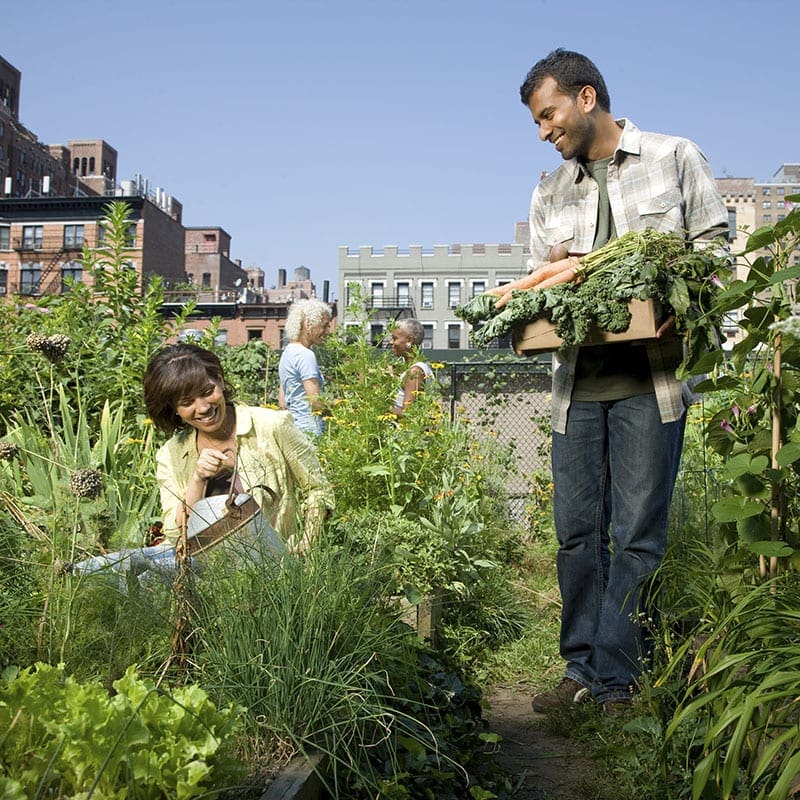Access to fresh food is important for an active, healthy life.
Where we live has a major impact on our overall health status and wellness.1 Food security is defined as stable access to sufficient, affordable food for an active, healthy life.2 Food insecurity impacts all racial and ethnic groups and geographic regions of the state.
Communities with high concentrations of fast-food outlets and relatively high-priced convenience stores have been shown to have higher rates of obesity and diabetes, which can lead to other chronic diseases such as cardiovascular disease, stroke, and arthritis.3
Indicator Progress
In 2011 (baseline year), an estimated 78.9% of California adults could always find fresh fruits and vegetables in their neighborhood. The most recent data available show 89.0% (2018). We hope to reach a target of 88.0% or higher by 2022.
More Data about Access to Fruits and Vegetables
Access to Fruits and Vegetables
Note: The indicator and data source have changed from the original LGHC 2012 Task Force Report as the original data source is no longer available. The baseline has been updated but the target will need to be developed for the new source.
Baseline
78.9%
Target
88.0%
Indicator Highlights

Skid Row Healthy Food Micro-Enterprise Project
Skid Row Healthy Food Micro-Enterprise Project by the Los Angeles Community Action Network is a pilot project in the early stages of development that seeks to serve the Skid Row community of Downtown Los Angeles. Skid Row is home to approximately 15,000 homeless, formerly homeless, and other low-income residents. Read more »
No Market, Worse Diet
One study found that residents with no supermarkets near their homes were 25-46% less likely to have a healthy diet.3
Children’s Shows, Unhealthy Ads
Food ads on television make up 50 percent of all the ad time on children’s shows. These ads are almost completely dominated by unhealthy food products (34 percent for candy and snacks, 28 percent for cereal, 10 percent for fast food, 4 percent for dairy products, 1 percent for fruit juices, and 0 percent for fruits or vegetables). Children are rarely exposed to public service announcements or advertising for healthier foods.4
One third Lack Regular Access
Over one third of adults in California reported that they seldom, never, or only sometimes could find a variety of good quality, affordable fresh fruits and vegetables that they want in their neighborhood.5
Stores play a critical role in our health. They not only impact the physical health of the people who visit them, but also the economic well-being of neighborhoods.5
Data Snapshot
Latinos, African Americans, and American Indians/Alaska Natives are disproportionately affected by food insecurity, with more than 40% of Lations and African Americans and more than 50% of American Indians/Alaska Natives experiencing food insecurity.6
Overall, 70% of stores across all California counties have ads for unhealthy foods (tobacco, alcohol, junk food) outside of stores, but only 12% have ads for healthy products (milk, fruit/vegetables).7
Over 75% of stores near schools sell youth-appealing candy and mint or liquor flavored tobacco products.7
Food-insecure children have increased rates of developmental and mental health problems. They may also have problems with cognitive development and stunted growth, leading to detrimental negative impacts on their behavioral, social, and educational development.8
Proportion of Adults Who Report Always Finding Fruits and Vegetables in Neighborhood, Over Time
Proportion of Adults Who Report Always Finding Fruits and Vegetables in Neighborhood, by Demographic Category
Proportion of Adults Who Report Always Finding Fruits and Vegetables in Neighborhood, by County
|
Share Your Story
Want to engage in moving the dial on the Creating Healthy Communities goal? Share your impact story!


